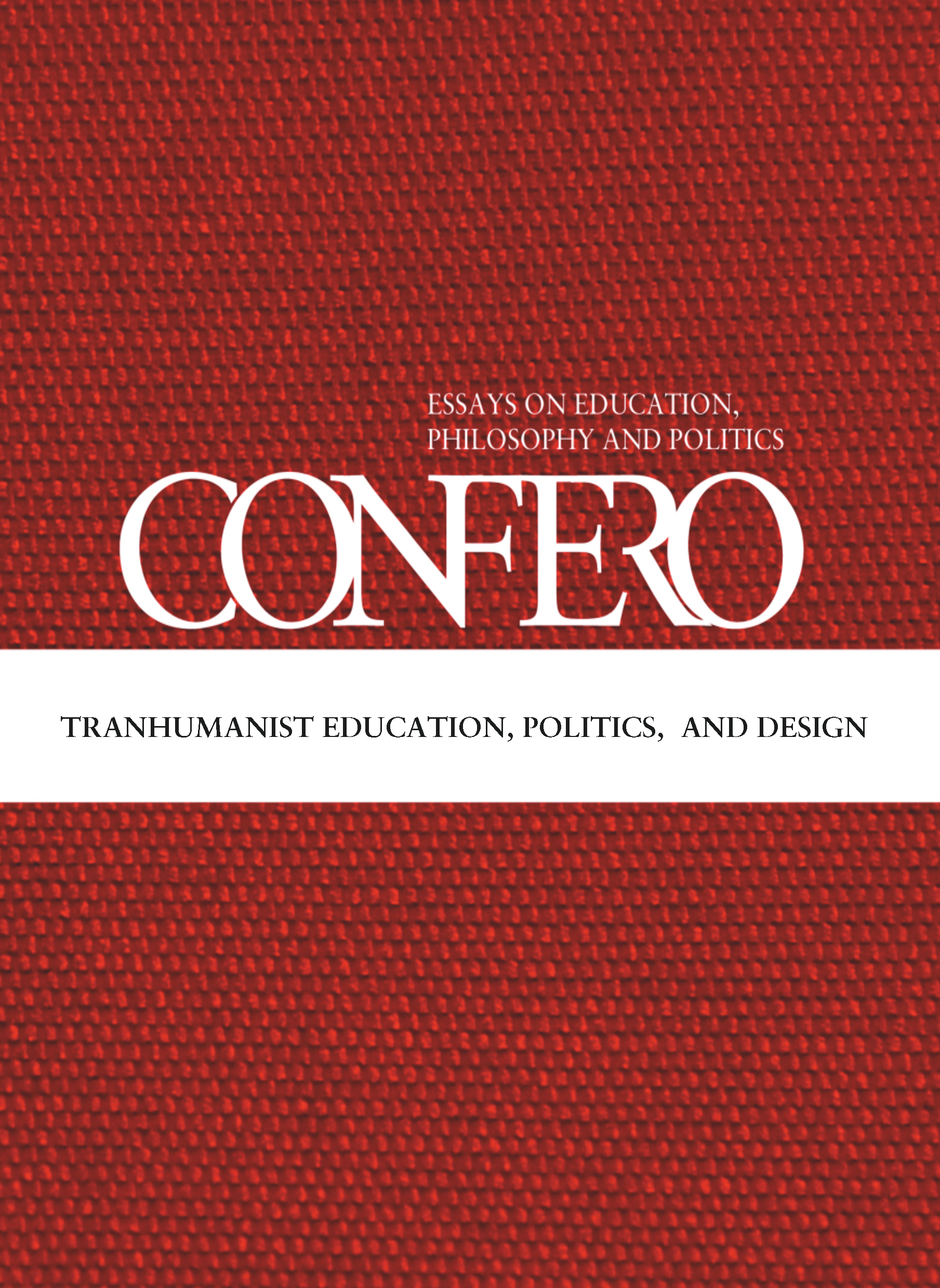What the surrogate touches
The haptic threshold of transhuman embodiment
DOI:
https://doi.org/10.3384/confero.2001-4562.161218Abstract
A core promise of transhumanism concerns the technological extension and augmentation of the human body, where media interfaces are used to push the borders of the human outward beyond their present limits. But questions about the composition of the extended body, and the mechanisms by which its extension are enacted, remain open, as the technologies that would allow a remote user to feel fully and seamlessly embodied in a remote environment are still very much in protean form. Reading the depiction of tele-existence technologies in the 2009 science fiction film Surrogates through a haptocentric lens, this article emphasizes the significance of mediating touch to the tele-existence paradigm, reflecting on touch’s status in the overall organization of both human and transhuman theories of mediated perception.
References
Clark, Andy. Natural-Born Cyborgs: Minds, Technologies, and the Future of Human Intelligence, Oxford, Oxford University Press, 2003.
Clark, Andy. “Re-Inventing Ourselves: The Plasticity of Embodiment, Sensing, and Min.” The Transhumanist Reader. Ed. M. More and N. Vita-More. Malden, MA: Wiley-Blackwell, 2013, 114-127. DOI: 10.1002/9781118555927.ch11
Elo, Mika. “Formatting the Senses of Touch,”Transformations 22, (2012).
Gruber, Jordan. S. “Gropethink: James Kramer wants to get in touch with your feelings” Wired 6.10, 1998, http://www.wired.com/wired/archive/6.10/kramer.html. [Retrieved 19 December 2016]
Herring, Francis W. “Touch: The Neglected Sense”, The Journal of Aesthetics and Art Criticism 7.3 (1949):199-215. DOI: 10.2307/426662
Hillis, Ken. Digital Sensations, Minneapolis, University of Minnesota Press, 1999.
Kearny, Richard. ‘Losing Our Touch’, New York Times, August 30, 2014.
Kittler, Friedrich. Gramophone, Film, Typewriter, Stanford, Stanford University Press, 1999.
Kittler, Friedrich. Optical Media, New York, Polity, 2010.
Kluitenber, Eric. “On the Archaeology of Imaginary Media”, in E. Huhtamo and J. Parikka, (ed), Media Archaeology: Approaches, Applications, and Implications, Berkeley, University of California Press, 2011. 48-69.
Kroker, Arthur. ‘Digital Humanism: The Processed World of Marshall McLuhan’, Ctheory a028, June, 1995, www.ctheory.net/articles.aspx?id=70. [Retrieved 19 December 2016]
McLuhan, Marshall. Understanding Media: The Extension of Man, Cambridge, MIT Press, 1994.
Minsky, Marvin. ‘Telepresence’, OMNI Magazine, June (1980): 44-52.
Montagu, Ashley. Touching: The Human Significance of the Skin. New York: Harper, 1971.
Moravec, Hans. “The Senses Have no Future.” 1997. http://www.frc.ri.cmu.edu/~hpm/project.archive/general.articles/1997/970128.nosense.html [Retrieved 19 December 2016]
Mosher, Ralph S. “From Handyman to Hardiman”, SAE Technical Paper 670088, 1967.
Obama, Barack H. “2015 State of the Union Address : Enhanced Version”, White House Office of Digital Strategy. https://www.whitehouse.gov/blog/2015/01/20/watch-president-obamas-2015-state-union. [Retrieved 19 December 2016]
Parisi, David and Jason Archer. “Making Analog: A Manifesto on the Prospects and Perils of a Haptic Media Studies” New Media & Society, (forthcoming).
Peters, John Durham. Speaking Into the Air: A History of the Idea of Communication. Chicago, IL: University of Chicago Press, 1999. DOI: 10.7208/chicago/9780226922638.001.0001
Stock, Gregory. “The Battle for the Future” The Transhumanist Reader. Ed. Max More and Natasha Vita-More.Malden, MA, Wiley-Blackwell, 2013. 302-316. DOI: 10.1002/9781118555927.ch30
Mostow, Jonathan. “Surrogates” Buena Vista Home Entertainment, 2010. Movie.
Tachi, Susumu. et al., “Tele-existence in Real World and Virtual World.” Proceedings of the Fifth International Conference on Advanced Robotics. Pisa: Italy, 1991. 193-198. DOI: 10.1109/icar.1991.240654
Tachi, Susumu. “Artificial Reality and Tele-Existence: Present Status and Future Prospect.” Proceedings of ICAT ’92, 2nd International Conference on Artificial Reality and Tele-Existence. Tokyo, Japan: July 1-3. 1991. DOI: 10.2493/jjspe.57.1321
Turkle, Sherry. Alone Together: Why We Expect More From Technology and Less from Each Other. New York: Basic Books, 2012.
Velliste, Meel, et al., “Cortical Control of a Prosthetic Arm in Self-feeding.” Nature 453.7198 (2008): 1098-1101. DOI: 10.1038/nature06996
Vicari, Anthony, Melnick, J. and Holman, M. “Getting Back in Touch with Electronics: Finding Opportunity in Emerging Haptics.” Lux Research: June. 2013.
Wheeler, John. “A More Perfect You” Buena Vista Home Entertainment, 2010.
Downloads
Published
Issue
Section
License
Copyright (c) 2016 David P. Parisi

This work is licensed under a Creative Commons Attribution 4.0 International License.
As Confero is an open access journal, this means that anyone who can access the Internet can freely download and read the journal. There are no commercial interests for Linköping University Electronic Press or Confero in publishing the journal.
The core idea of open access is that copyright remains with the author(s). However, we publish with the agreement of the author that if she or he decides later to publish the article elsewhere, that the publisher will be notified, prior to any acceptance, that the article has already been published by Confero.
When publishing with Confero, it is with the agreement of the author that if they make their article available elsewhere on the internet (for example, on their own website or an institutional website), that they will do so by making a link to the article as published in Confero using the Digital Object Identifier (DOI) number of the article and acknowledge in the text of the site that the article has been previously published in Confero.
As evident by the markers on our homepage, Confero falls under the Creative Commons licence abbreviated BY. This means that we allow others to use, spread and elaborate on the published articles, as long as they acknowledge who published it and where it was originally published.



